Theme Parks & Themed Entertainment
A Heapin’ Helpin’ of Horror
JHM columnist Seth Kubersky returns from Tampa with a review of Busch Garden’s “Howl-O-Scream” festivities. Seth also gives us an update on Universal’s Halloween Horror Nights. Have the scares suddenly become scarce at that Central Florida theme park?

Pop quiz: What is the #1 haunted attraction in America?
Wrong!
According to Haunt World Magazine (2002), the answer is Howl-O-Scream at Busch Gardens in Tampa Bay, Florida. At least, that’s what the advertising that has been blanketing Central Florida claims; I can’t find back issues of Haunt World, and there’s no mention of it on their website, so we’ll have to take their word for it.
Busch has been heavily advertising Howl-o-scream (HOS) to the Orlando market this season, positioning their event as an alternative to Universal’s heavily-attended Halloween Horror Nights (HHN). This surprised me, since I’d heard little buzz over the years about HOS. Certainly not enough to make it worth the hour-plus drive, especially when Universal’s HHN is right in my neighborhood. I must admit some bias, since I am a staff alumni of HHN, as readers of my last review know. But the claims of #1 status intrigued me enough to get me on I-4 last Thursday afternoon for a trip to Tampa.
And you know what? They were right!
Busch Gardens’ Howl-o-scream is not as slick or sophisticated as Universal’s event. But in all the important ways, it’s just as much fun, if not more. I had a fine time, and I’d recommend a visit to anyone in the area, as long as you go in with appropriate expectations.
But before I delve into my HOS experience, I’d like to share some thoughts from my return visit to Universal’s HHN. Readers of my earlier review will recall I visited on the first Sunday of the event, and had a great time. I judged it a significant improvement over last year’s event, and rated it a “B+”. Since I have a “Frequent Fear” pass (unlimited off-peak visits), I decided it was time for another look, since the event often changes during its run.
What I encountered on Wednesday evening made me rethink my recommendation of the event. I had assumed that a mid-week visit was my best chance for a low-attendance crowd. Boy, was I wrong. Even with a projected attendance of only 24,000, the park felt more crowded than I found comfortable. Walkways were constantly jammed, destroying any opportunities for walk-around scareactors. The one house I experienced had a 65 minute wait, and it was one of the less crowded houses. I would have considered the Express passes mandatory for first-time visitors on that night, which is probably why their price had been raised to $20. Without those Express passes, it would be impossible for a guest to see all 6 haunted houses before the 12am closing, let alone see shows or ride the roller coasters.
And this was only a Wednesday. I can’t fathom the disappointment of a guest paying full price for a Friday or Saturday night, discovering they’ve paid over $50 to fight maddening crowds and experience one or two attractions.
One thing I did enjoy was seeing the Lizardman. He performs in the Funhouse of Fear queue line, and is a genuine freak (he even has the word tattooed across his chest). He performs classic sideshow feats like sword swallowing, body manipulation, and blockhead tricks. Best of all, it does it with an engaging (and often crude) patter. This is what America is all about, kids, and it was the highlight of my visit.
Unfortunately, the same cannot be said of my second viewing of the Bill & Ted show. This is not one of the better editions of the show, and I may have been too kind in my first review. The big fight scene is so busy that you are distracted from the fact that the choreography is rather sloppy. Worse, the dancing is uninspired, and kills whatever comic momentum the show builds. People started fleeing the theater as soon and the dance number that occupies the last third of the show began. The friends I was with, first-time visitors to HHN, enjoyed the show, but I wanted to tell them about the sharp satire and big laughs from years past. And one of my favorite bits, involving a Disney cast member trying to deliver a safety spiel, has apparently been cut.
It was with all this in mind that I made the trip to Tampa the next afternoon. I arrived at 4:20 and entered the park a half hour before minutes before the 5pm closing. Once inside, I purchased a HOS upgrade pass ($21), and grabbed a map. Here is where you see the differences between Universal and Busch. Whereas Universal’s map is legible and informative, Busch’s is a mess. Entrances for houses are vague, there’s no indication of what rides are operational, and the scarezone locations aren’t labeled. One nice thing as the houses are given an “intensity” rating of one to five “skulls”, though I didn’t find that to directly correlate to the scariness of the attractions.
The employees weren’t much help either. While all the employees were polite, friendly, and competent at their particular task, they we’re very informed on basic details about the event. Questions to multiple staff members like “where is the nearest haunted house?” or “where am I on the map?” were repeatedly met with “I don’t know”.
For example, I saw a sign mentioning their “Fright Advantage” coupon booklets, similar to Universal’s Express booklets. I went hunting for them, and was bounced among 5 different shops in the main entrance plaza, the last one sending me back to the first. I finally went to guest services. The gentleman was kind enough to walk me to a shop, show me which line to stand in, and point out which staff member to speak to. When I got to the head of the line, I discovered the guy he had pointed out didn’t know what I was talking about, and sent me back to guest services.
At this point I read the flyer guest services had handed me, and just gave up looking for them all together. Universal’s booklets run $15-$20 on an off-peak night, and give you a coupon for every house, ride, and show in the park. Busch’s are $20 ($15 if bought in advance) but only give you front-of-the-line passes for 4 of the 6 houses. You also get a pass for one of the three roller coasters, and some modest discounts on concessions. As it turned out, there was no need for the booklet, and I never saw any being sold or used during the night.
I had just enough time before closing to ride Kumba a few times. This is the most underappreciated roller-coaster in Florida. Upstarts like Hulk and Kraken may get more buzz, and its park-mates Gwazi and Montu get more advertising play. But Kumba may be, second by second, the best of all of them. It doesn’t have Hulk’s dramatic takeoff, but you get a great view from the lift hill, and unlike Hulk it is intense and relentlessly paced from the first drop to the final brake run. It is perfectly integrated into the landscape, with tunnels and closely planted palms. I was able to ride three times before they kicked us off, and could have happily gone again. Gwazi, Montu, and most of the “spin & puke” rides were also open throughout the event, with modest waits. The roller coasters are some of the best in the country, and are well worth riding, especially in the dark.
At 5pm I discovered another big difference between Universal and Busch – how they handle the in-between guests. At Universal they treated like people who have spent a lot of money on both day and evening tickets (or valued annual passholders) deserve to, and are given perks. While they are necessarily confined to one area while the park is swept of day guests, they are given food, shopping, and attractions while they wait. More importantly, they are guaranteed early entry to at least one haunted house. This waiting period usually run less than 90 minutes.
Busch, on the other hand, shut down at 5pm with a vengeance. Those of us who were inside the “Timbuktu” area before 5pm were locked down with no food or drink to buy, no air conditioned place to sit, and no attractions operating. Just outside the entrance to the plaza we were trapped in was a crowd of other day-and-night guests who had been caught outside the neutral zone after 5pm. They were held standing in the sun, clutching their passes, waiting for someone or other to give the signal to allow them in. I know they were out there for at least half an hour, and for all I know they might still be there.
After exploring the architectural charms of the dormant Timbuktu plaza (total time: 6 minutes), I tried asking cast members if they had any idea when there would be anything for us to do or buy. “Nothing until 7:30” was the most popular answer, followed by a bored shrug. I finally found a manager who said there might be something open soon, but that all the houses and rides would be closed until 7:30.
Finally, after an hour of waiting, the area began to show signs of life. While the air-conditioned restaurant and larger snack bar remained closed, the smaller snack bar opened and was quickly swamped. Frightened by the look of the corn dogs, I went with the only other option, the slightly-less-scary chicken fingers. For my $10, I got a basket of limp fries, a small cup of lemonade so tart it made my eyes roll back, and the worst chicken fingers I’ve ever tasted. You couldn’t even buy a beer, which I think would be unconstitutional in an Anheuser-Busch park. Not a good way to start the evening, especially since Busch usually has the best food of all the major theme parks.
Finally, at 6:40pm, after an hour and 40 minutes sitting outside, the “Haunted Lighthouse” attraction opened. This “4D” movie, based to the kiddie-horror books by R. L. Stein, is housed in the former dolphin show arena. How they got a very good horror director (Joe Dante) and very funny actors (Christopher Lloyd, Michael McKean) to make a movie that wasn’t the least bit scary or funny is beyond me. This is a 22 minute waste of time that recycles every gag from every other 3D movie, does it badly, and then does it again until you’re bored. The 3D is weak, with a distracting shimmering effect, and isn’t as nearly as convincing as “Shrek 4D” or “Philharmagic.” The plot is thin and uninteresting, the adult actors are given nothing to do, and even Weird Al seems embarrassed. Worst of all, the water effects are unpleasantly overdone, and it’s no fun to tromp through haunted houses in damp clothes. This attraction made me long for Williamsburg’s departed “Haunts of the Olde Country”, which should give you an idea just how bad “Haunted Lighthouse” is.
Finally, at about quarter past 7, the haunted houses started opening up. There was no communication with the guests as to what was open or where we could go. I just discovered that the barrier to a house entrance had been removed. The attendant casually informed me that “everything” was now open, and that I could go in. In reality, the total time I was left waiting was less than 2 hours, and it didn’t kill me. But it bothered me to see such poor communication with guests. If nothing else, we were a captive audience that could have been marketed to. Universal recognizes that these guests will spend more and stay later if treated well, and I wish Busch had picked up on that. Most importantly, they need to train their employees to communicate effectively with guests, and give accurate and consistent information.
But you know what? All these minor gripes and distractions melted away once the event got rolling. After two hours of aggravation and boredom, I was in the perfect mood to criticize the rest of the evening, but I just had too much fun.
Haunted Houses
A Halloween event lives and dies by its haunted houses, and in this Busch does not disappoint. You need to know up front that the production values in the houses, like everything else in the park, are not up to the high standard that Universal sets. While the houses are all large, creative, and well-constructed, they are not nearly as elaborate or detailed. Artistic details of lighting, sound, and scenic decoration are noticeably less refined, though still effective. There are few of the special effects and mechanical gags that Universal does so well. Gore is less prominent (though neither attraction is particularly bloody) and the severed heads and mutilated bodies that are there are obviously store-bought. Makeup and masks on the actors are also less elaborate, though this is an area Universal has also slipped in the last few years. Overall, finer points of story and theming, while a cut above your local neighborhood haunted house, suffer in comparison to Universal’s bigger budget event.
To be honest, these aren’t deficits that the average visitor will ever notice. Haunted house connoisseurs will notice the cruder designs and less elaborate effects. The other 99% of guests will be too busy being scared. It seems Busch has taken some of the money that would have been spent on sets and props, and spent them on actors instead. Though their houses are, on average, about the same size as Universal’s, it felt like they were much more populated. A room that would have one scareactor at Universal had two or even three at Busch. I wasn’t able to make a scientific count, but the effect was a more constant barrage of live scares. Again, the actors might not be as elaborately made-up or thoroughly directed, but there are lots of them, and they perform with as much energy and enthusiasm as any at Universal.
The other difference from Universal that every guest will notice is even more important: Busch pulses. Universal’s HHN has become so popular that crowds overwhelm the houses, even on off-peak nights. Lines quickly exeede and hour, and the only way to keep them moving is to send a steady stream of guests though the houses. This destroys the sense of isolation that is key to effective scares.
Busch, on the other hand, is much better able to handle the smaller crowds that attend their event. The difference between the two parks was like night and day: while the crowds at Universal on Wednesday were so uncomfortable that I left after one house, Busch on Thursday felt practically empty. I was able to experience every house in the park (half of them twice), three shows, and a couple roller coasters, all before 10:30pm. None of the houses had more than a 15 minute wait during my visit, and most were much less.
Best of all, the smaller crowds allow Busch to pulse small groups through the houses, with brief gaps between groups. This makes for a much more intimate experience, and actors can time their scares better without fear of giving their position away to the next group. This alone elevates the houses above whatever budget limitations they might suffer from. As a guy who has worked in many a haunted house, the highest compliment I can give is to say that more than one of Busch’s actors “got” me, something I cannot say about my 2 trips to this year’s HHN.
Interestingly, several of Busch’s houses use very similar themes to HHN’s houses, so you can do an apples-to-apples comparison between the two events. Here is a brief summary of each house:
Tortured: This was the first house I visited, and the most generic. It is a fairly standard haunted dungeon, with the usual assortment of gothic torture devices. Lighting is poor, and there is no real sense of space, probably because the entire house is contained in the area usually used for the bumper cars. Still, the actors were well-hidden and aggressive, and there was no wait. The least of the houses, on the level of one you’d find in most towns this time of year. Grade: C
Ripper Row: This is more like it. Based loosely on Jack the Ripper, this house takes you through a series of Victorian London environments, from city streets to a barn (nice use of hay smell) to a park and a slaughterhouse. Simple but effective theming, some well-disguised boo-holes, and an energetic cast make this one a winner. The only thing that hurts it is being a little too short. Grade: B
Dark Heart’s Fear Fair: Like Universal’s “Funhouse of Fear”, this is a circus-themed house. Unlike Universal’s house, this one uses a wide variety of indoor and outdoor environments. It begins with a disorienting spinning tunnel, always a favorite of mine, and takes you though a series of freak sideshows and demented carnival games. There are mirror mazes, a strobe-lit shooting gallery, clowns on bungie cords, and even an opera performance. Best of all, there are multiple points at which the path diverges, with significant differences between the two sides, making this perfect for a second walk-though. Grade: A-
The Mortuary: Much like HHN’s “Screamhouse”, this is styled as a Southern gothic funeral home. A mortician/preacher regales the queue with a creepy revivalist patter, setting the mood perfectly. Inside is the usual succession of coffins, autopsy rooms, and crematoria, concluding in a trip through the underworld. Though not nearly as detailed as Universal’s version, it is a very large house with lots of effective scares and, again, a large and enthusiastic cast. Grade: A-
Escape From Insanity – Resident’s Revenge: This house is directly analogous to “PsychoScarapy”, the highlight of this year’s HHN, and nearly gives that house a run for it’s money. It doesn’t have the amazingly detailed sights (or smells) of Universal’s house, or it’s extremely creative actors. But it is just as effective in it’s own way, and exceptionally long. There are some great moments, like a hallway covered in bugs, and plenty of actors, including a very disturbing drag queen who greets you. The downfall of this house is that much of the final third feels unfinished. After a series of well-designed sets depicting the inside of an asylum, you come to a very long stretch of unthemed black hallways with no actors to speak of. Perhaps they ran out of budget, but it’s a shame that the excellence of the first part of the house is followed with such an uninspired finale. Grade: B+
Demented Dimensions: This house is also similar to HHN’s “Funhouse of Fear”, in that it combines bright colors, black light, and prismatic 3D glasses. It is also the most elaborate house scenically, with huge fluorescent murals covering every surface. This house will make you feel like you took the brown acid. It isn’t particularly scary, but it is trippier than anything this side of “The Cat in the Hat”, and a whole lot of fun. I only wish it could have been twice as long. Grade: B+
Scarezones: Universal themes each island at HHN with scenic pieces and scareactors. They are more successful in some islands (Jurassic Park, Toon Lagoon) than in others (Marvel, Seuss). Busch Gardens is far too large to theme every area, so instead they have designated 5 “scarezones”, much as Universal used to at USF. These scarezones are like miniature outdoors haunted houses, themed side paths that can be explored or avoided at the guest’s discretion. They combine set pieces, lighting, fog, and hidden actors to create some great scares (and photo ops). I especially liked the “Grisly Gardens” with moving shrubs and living statues, and the “Agony Express” filled with undead train conductors and tortured passengers. Grade: B
Shows
As a former employee (and current fan) of Universal’s entertainment department, it kills me to say this: Busch has them beat this year. HHN’s “Bill & Ted” show, once worth the price of admission by itself, has grown stale. Infestation is a waste of time, and is standing room only. The old days, when there would be an illusionist or hypnotist in one stadium and a musical revue at the main stage, are long gone. Busch, on the other hand, presents two fun (if corny) shows with comfortable seating, an amusing outdoor show, and a number of interactive DJs and street dancers. Like the houses, Busch’s shows don’t have Universal’s production values, and they’re not big on sophisticated satire or postmodern pop-culture deconstruction. What they do have is talented, enthusiastic performers, dance routines that don’t wear out their welcome, and a good dose of creepy-funny Halloween spirit.
“Eternal Reward”: This show is performed inside the air-conditioned Haunted Grill restaurant, so you can grab a sandwich and a beer while you watch the show. The plot is simple: four characters gather for the reading of the late relative’s will, and the audience decides which one is guilty of murdering the deceased. The black widow sings the “Cell Block Tango” from Chicago, the son does a boy-band medley, the mistress lip-synchs to some Britney, and the stoner uncle jams to some classic rock. In the end, the audience votes by applause for one of the four to be tastefully disembowled. The music is a mix of live singing and tracking, the dancing is Vegas-lite but energetic, and the show moves at a zippy pace. Bonus points for using a song from the “Buffy the Vampire Slayer” musical. Grade: B+
“Fiends”: Dr. Freakinstein and Igor (“it’s pronounced Eye-gore”) build some monsters and throw a party in this song-and-dance answer to Universal’s Beetlejuice show. The characters are unlicensed, so the creature makeup is crude, the illusions are simple, and the jokes were old when Abbot and Costello were in vaudeville. But the dancers are athletic, the choreography is acrobatic, and the girls are great eye candy. Bonus points for gratuitous use of the “Time Warp”, along with a good mix of Motown, disco, and 80’s pop. Everyone on stage looks like they’re having a great time, and the audience was too. Grade: A-
“Theatre De La Morte”: This brief open-air show, performed near the “Escape from Insanity” house, is a “re-enactment” of an 18th century witch trial. After an over-long setup involving a flower girl hawking souvenirs, and warlock is dragged on stage and asked to recant his sins. The ensuing mayhem, involving a decapitation, resurrection, and disappearance, uses simple illusions and pyrotechnics. I found it amusing, especially the knot of teenagers behind me who seemed determined to create a “Rocky Horror” -style call-and-response to the show. Worth seeing if you’re nearby when the show is about to start. Grade: B-
Final Grades:
Universal’s HHN (revised grade after 2 visits): B
Busch Garden’s HOS: B+
Busch Gardens has done what I would have thought impossible – they beat Universal at their own game. For the most part, Universal is a victim of their own success. HHN has become so popular that the heavy crowds hurt the guest experience on all but the slowest nights. This is exacerbated by the move to IOA, which handles large crowds much less efficiently than USF did. All the elaborate decor and expensive effects in the houses mean nothing if you have to wait hours and hours to see them.
Busch, on the other hand, has the blessings of size and lower attendance. They might not have the Hollywood-quality scenic designs, but they have plenty of thrills and chills. Maybe in a few years, when word of mouth spreads, Busch’s HOS will become as overrun as HHN. Until then, it offers the better value for those in the area looking for tricks and treats. I’m just glad they’re both in my backyard, so I don’t have to choose!
History
The Evolution and History of Mickey’s ToonTown
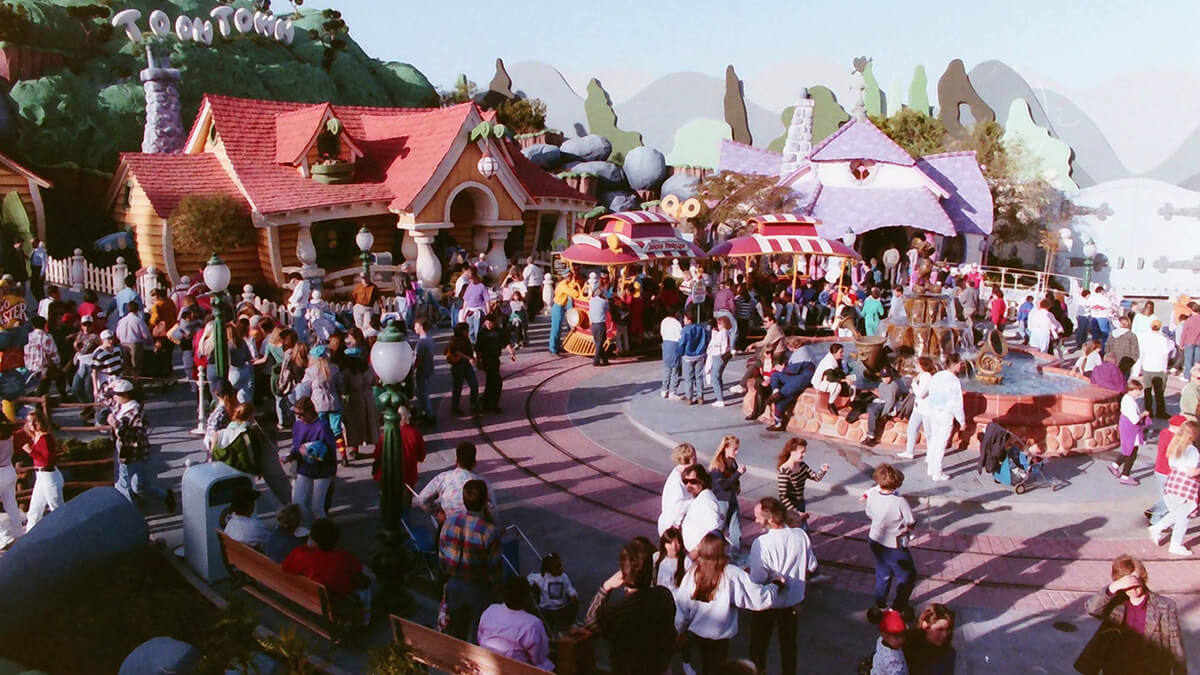
Disneyland in Anaheim, California, holds a special place in the hearts of Disney fans worldwide, I mean heck, it’s where the magic began after all. Over the years it’s become a place that people visit in search of memorable experiences. One fan favorite area of the park is Mickey’s Toontown, a unique land that lets guests step right into the colorful, “Toony” world of Disney animation. With the recent reimagining of the land and the introduction of Micky and Minnies Runaway Railway, have you ever wondered how this land came to be?
There is a fascinating backstory of how Mickey’s Toontown came into existence. It’s a tale of strategic vision, the influence of Disney executives, and a commitment to meeting the needs of Disney’s valued guests.
The Beginning: Mickey’s Birthdayland
The story of Mickey’s Toontown starts with Mickey’s Birthdayland at Walt Disney World’s Magic Kingdom. Opened in 1988 to celebrate Mickey Mouse’s 60th birthday, this temporary attraction was met with such overwhelming popularity that it inspired Disney executives to think bigger. The idea was to create a permanent, immersive land where guests could step into the animated world of Mickey Mouse and his friends.
In the early ’90s, Disneyland was in need of a refresh. Michael Eisner, the visionary leader of The Walt Disney Company at the time, had an audacious idea: create a brand-new land in Disneyland that would celebrate Disney characters in a whole new way. This was the birth of Mickey’s Toontown.
Initially, Disney’s creative minds toyed with various concepts, including the idea of crafting a 100-Acre Woods or a land inspired by the Muppets. However, the turning point came when they considered the success of “Who Framed Roger Rabbit.” This film’s popularity and the desire to capitalize on contemporary trends set the stage for Toontown’s creation.
From Concept to Reality: The Birth of Toontown
In 1993, Mickey’s Toontown opened its gates at Disneyland, marking the first time in Disney Park history where guests could experience a fully realized, three-dimensional world of animation. This new land was not just a collection of attractions but a living, breathing community where Disney characters “lived,” worked, and played.
Building Challenges: Innovative Solutions
The design of Mickey’s Toontown broke new ground in theme park aesthetics. Imagineers were tasked with bringing the two-dimensional world of cartoons into a three-dimensional space. This led to the creation of over 2000 custom-built props and structures that embodied the ‘squash and stretch’ principle of animation, giving Toontown its distinctiveness.
And then there was also the challenge of hiding the Team Disney Anaheim building, which bore a striking resemblance to a giant hotdog. The Imagineers had to think creatively, using balloon tests and imaginative landscaping to seamlessly integrate Toontown into the larger park.
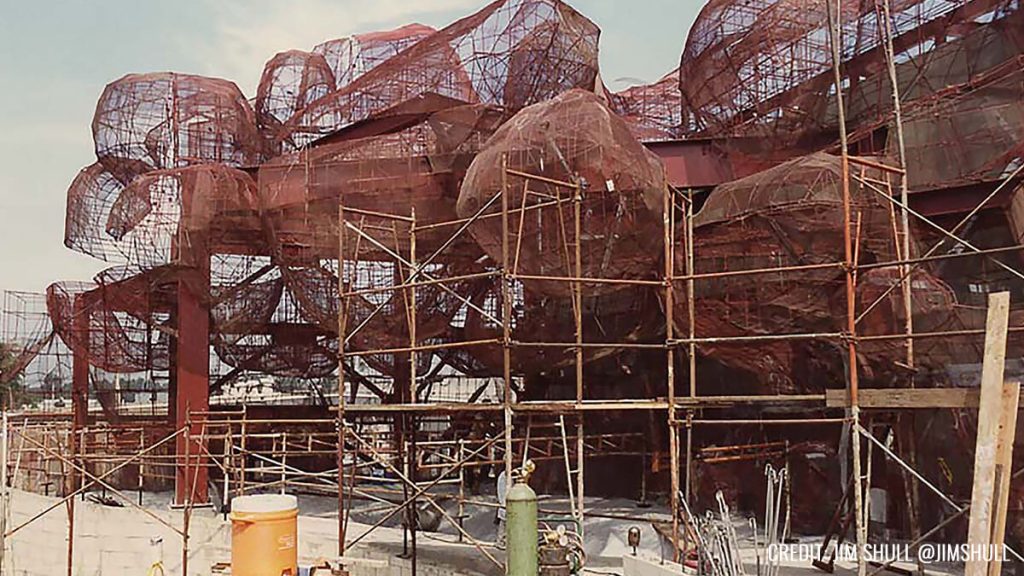
Key Attractions: Bringing Animation to Life
Mickey’s Toontown featured several groundbreaking attractions. “Roger Rabbit’s Car Toon Spin,” inspired by the movie “Who Framed Roger Rabbit,” became a staple of Toontown, offering an innovative ride experience. Gadget’s Go-Coaster, though initially conceived as a Rescue Rangers-themed ride, became a hit with younger visitors, proving that innovative design could create memorable experiences for all ages.
Another crown jewel of Toontown is Mickey’s House, a walkthrough attraction that allowed guests to explore the home of Mickey Mouse himself. This attraction was more than just a house; it was a carefully crafted piece of Disney lore. The house was designed in the American Craftsman style, reflecting the era when Mickey would have theoretically purchased his first home in Hollywood. The attention to detail was meticulous, with over 2000 hand-crafted, custom-built props, ensuring that every corner of the house was brimming with character and charm. Interestingly, the design of Mickey’s House was inspired by a real home in Wichita Falls, making it a unique blend of real-world inspiration and Disney magic.
Mickey’s House also showcased Disney’s commitment to creating interactive and engaging experiences. Guests could make themselves at home, sitting in Mickey’s chair, listening to the radio, and exploring the many mementos and references to Mickey’s animated adventures throughout the years. This approach to attraction design – where storytelling and interactivity merged seamlessly – was a defining characteristic of ToonTown’s success.
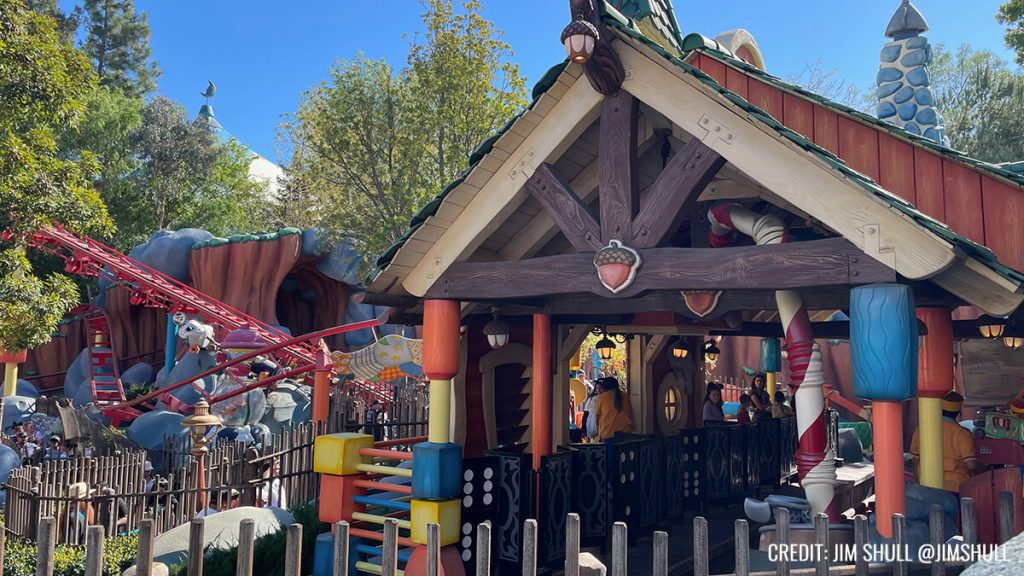
Executive Decisions: Shaping ToonTown’s Unique Attractions
The development of Mickey’s Toontown wasn’t just about creative imagination; it was significantly influenced by strategic decisions from Disney executives. One notable input came from Jeffrey Katzenberg, who suggested incorporating a Rescue Rangers-themed ride. This idea was a reflection of the broader Disney strategy to integrate popular contemporary characters and themes into the park, ensuring that the attractions remained relevant and engaging for visitors.
In addition to Katzenberg’s influence, Frank Wells, the then-President of The Walt Disney Company, played a key role in the strategic launch of Toontown’s attractions. His decision to delay the opening of “Roger Rabbit’s Car Toon Spin” until a year after Toontown’s debut was a calculated move. It was designed to maintain public interest in the park by offering new experiences over time, thereby giving guests more reasons to return to Disneyland.
These executive decisions highlight the careful planning and foresight that went into making Toontown a dynamic and continuously appealing part of Disneyland. By integrating current trends and strategically planning the rollout of attractions, Disney executives ensured that Toontown would not only capture the hearts of visitors upon its opening but would continue to draw them back for new experiences in the years to follow.
Global Influence: Toontown’s Worldwide Appeal
The concept of Mickey’s Toontown resonated so strongly that it was replicated at Tokyo Disneyland and influenced elements in Disneyland Paris and Hong Kong Disneyland. Each park’s version of Toontown maintained the core essence of the original while adapting to its cultural and logistical environment.
Evolution and Reimagining: Toontown Today
As we approach the present day, Mickey’s Toontown has recently undergone a significant reimagining to welcome “Mickey & Minnie’s Runaway Railway” in 2023. This refurbishment aimed to enhance the land’s interactivity and appeal to a new generation of Disney fans, all while retaining the charm that has made ToonTown a beloved destination for nearly three decades.
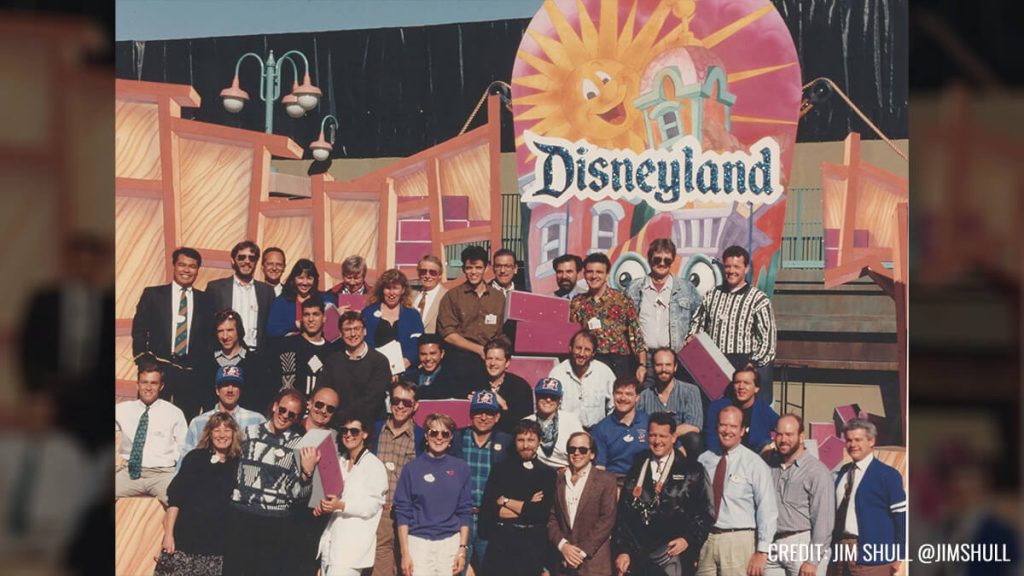
Dive Deeper into ToonTown’s Story
Want to know more about Mickey’s Toontown and hear some fascinating behind-the-scenes stories, then check out the latest episode of Disney Unpacked on Patreon @JimHillMedia. In this episode, the main Imagineer who worked on the Toontown project shares lots of interesting stories and details that you can’t find anywhere else. It’s full of great information and fun facts, so be sure to give it a listen!
History
Unpacking the History of the Pixar Place Hotel
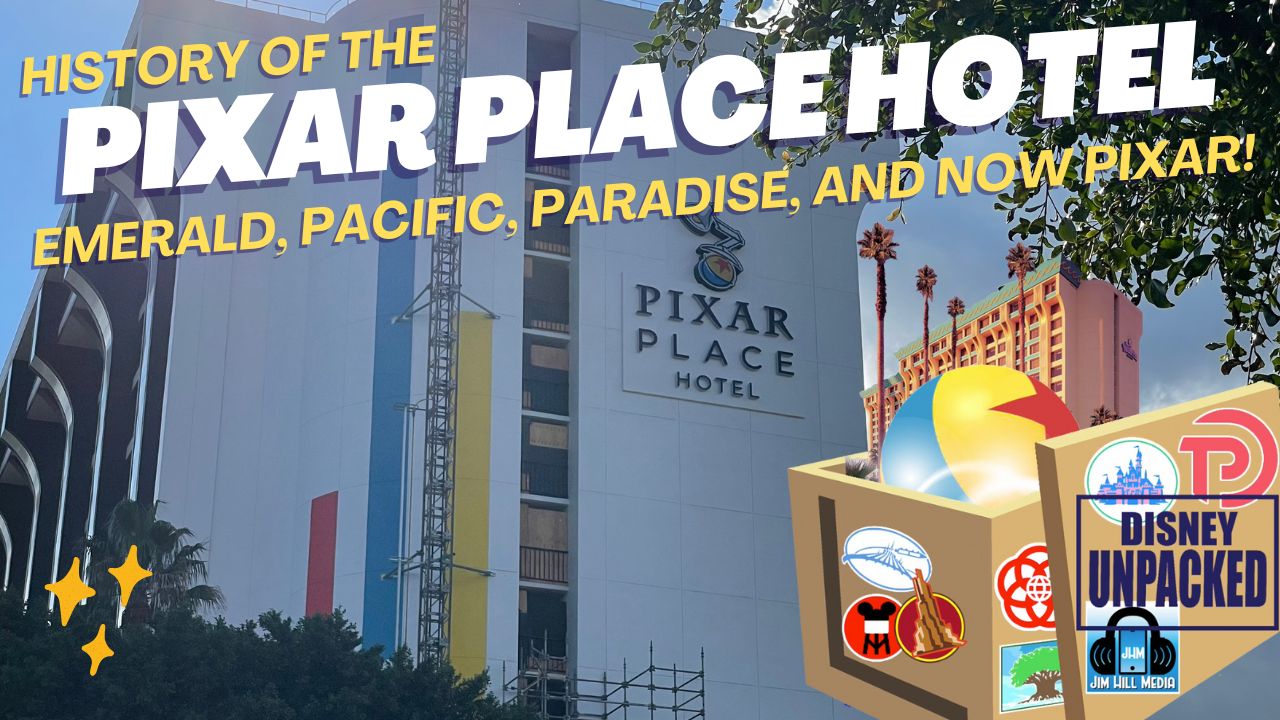
Pixar Place Hotel, the newly unveiled 15-story tower at the Disneyland Resort, has been making waves in the Disney community. With its unique Pixar-themed design, it promises to be a favorite among visitors.
However, before we delve into this exciting addition to the Disneyland Resort, let’s take a look at the fascinating history of this remarkable hotel.
The Emergence of the Disneyland Hotel
To truly appreciate the story of the Pixar Place Hotel, we must turn back the clock to the early days of Disneyland. While Walt Disney had the visionary ideas and funding to create the iconic theme park, he faced a challenge when it came to providing accommodations for the park’s visitors. This is where his friend Jack Wrather enters the picture.
Jack Wrather, a fellow pioneer in the television industry, stepped in to assist Walt Disney in realizing his dream. Thanks to the success of the “Lassie” TV show produced by Wrather’s company, he had the financial means to build a hotel right across from Disneyland.
The result was the Disneyland Hotel, which opened its doors in October 1955. Interestingly, the early incarnation of this hotel had more of a motel feel than a hotel, with two-story buildings reminiscent of the roadside motels popular during the 1950s. The initial Disneyland Hotel consisted of modest structures that catered to visitors looking for affordable lodging close to the park. While the rooms were basic, it marked the beginning of something extraordinary.
The Evolution: From Emerald of Anaheim to Paradise Pier
As Disneyland’s popularity continued to soar, so did the demand for expansion and improved accommodations. In 1962, the addition of an 11-story tower transformed the Disneyland Hotel, marking a significant transition from a motel to a full-fledged hotel.
The addition of the 11-story tower elevated the Disneyland Hotel into a more prominent presence on the Anaheim skyline. At the time, it was the tallest structure in all of Orange County. The hotel’s prime location across from Disneyland made it an ideal choice for visitors. With the introduction of the monorail linking the park and the hotel, accessibility became even more convenient. Unique features like the Japanese-themed reflecting pools added to the hotel’s charm, reflecting a cultural influence that extended beyond Disney’s borders.
Japanese Tourism and Its Impact
During the 1960s and 1970s, Disneyland was attracting visitors from all corners of the world, including Japan. A significant number of Japanese tourists flocked to Anaheim to experience Walt Disney’s creation. To cater to this growing market, it wasn’t just the Disneyland Hotel that aimed to capture the attention of Japanese tourists. The Japanese Village in Buena Park, inspired by a similar attraction in Nara, Japan, was another significant spot.
These attractions sought to provide a taste of Japanese culture and hospitality, showcasing elements like tea ceremonies and beautiful ponds with rare carp and black swans. However, the Japanese Village closed its doors in 1975, likely due to the highly competitive nature of the Southern California tourist market.
The Emergence of the Emerald of Anaheim
With the surge in Japanese tourism, an opportunity arose—the construction of the Emerald of Anaheim, later known as the Disneyland Pacific Hotel. In May 1984, this 15-story hotel opened its doors.
What made the Emerald unique was its ownership. It was built not by The Walt Disney Company or the Oriental Land Company (which operated Tokyo Disneyland) but by the Tokyu Group. This group of Japanese businessmen already had a pair of hotels in Hawaii and saw potential in Anaheim’s proximity to Disneyland. Thus, they decided to embark on this new venture, specifically designed to cater to Japanese tourists looking to experience Southern California.
Financial Challenges and a Changing Landscape
The late 1980s brought about two significant financial crises in Japan—the crash of the NIKKEI stock market and the collapse of the Japanese real estate market. These crises had far-reaching effects, causing Japanese tourists to postpone or cancel their trips to the United States. As a result, reservations at the Emerald of Anaheim dwindled.
To adapt to these challenging times, the Tokyu Group merged the Emerald brand with its Pacific hotel chain, attempting to weather the storm. However, the financial turmoil took its toll on the Emerald, and changes were imminent.
The Transition to the Disneyland Pacific Hotel
In 1995, The Walt Disney Company took a significant step by purchasing the hotel formerly known as the Emerald of Anaheim for $35 million. This acquisition marked a change in the hotel’s fortunes. With Disney now in control, the hotel underwent a name change, becoming the Disneyland Pacific Hotel.
Transformation to Paradise Pier
The next phase of transformation occurred when Disney decided to rebrand the hotel as Paradise Pier Hotel. This decision aligned with Disney’s broader vision for the Disneyland Resort.
While the structural changes were limited, the hotel underwent a significant cosmetic makeover. Its exterior was painted to complement the color scheme of Paradise Pier, and wave-shaped crenellations adorned the rooftop, creating an illusion of seaside charm. This transformation was Disney’s attempt to seamlessly integrate the hotel into the Paradise Pier theme of Disney’s California Adventure Park.
Looking Beyond Paradise Pier: The Shift to Pixar Place
In 2018, Disneyland Resort rebranded Paradise Pier as Pixar Pier, a thematic area dedicated to celebrating the beloved characters and stories from Pixar Animation Studios. As a part of this transition, it became evident that the hotel formally known as the Disneyland Pacific Hotel could no longer maintain its Paradise Pier theme.
With Pixar Pier in full swing and two successful Pixar-themed hotels (Toy Story Hotels in Shanghai Disneyland and Tokyo Disneyland), Disney decided to embark on a new venture—a hotel that would celebrate the vast world of Pixar. The result is Pixar Place Hotel, a 15-story tower that embraces the characters and stories from multiple Pixar movies and shorts. This fully Pixar-themed hotel is a first of its kind in the United States.
The Future of Pixar Place and Disneyland Resort
As we look ahead to the future, the Disneyland Resort continues to evolve. The recent news of a proposed $1.9 billion expansion as part of the Disneyland Forward project indicates that the area surrounding Pixar Place is expected to see further changes. Disneyland’s rich history and innovative spirit continue to shape its destiny.
In conclusion, the history of the Pixar Place Hotel is a testament to the ever-changing landscape of Disneyland Resort. From its humble beginnings as the Disneyland Hotel to its transformation into the fully Pixar-themed Pixar Place Hotel, this establishment has undergone several iterations. As Disneyland Resort continues to grow and adapt, we can only imagine what exciting developments lie ahead for this iconic destination.
If you want to hear more stories about the History of the Pixar Place hotel, check our special edition of Disney Unpacked over on YouTube.
Stay tuned for more updates and developments as we continue to explore the fascinating world of Disney, one story at a time.
History
From Birthday Wishes to Toontown Dreams: How Toontown Came to Be
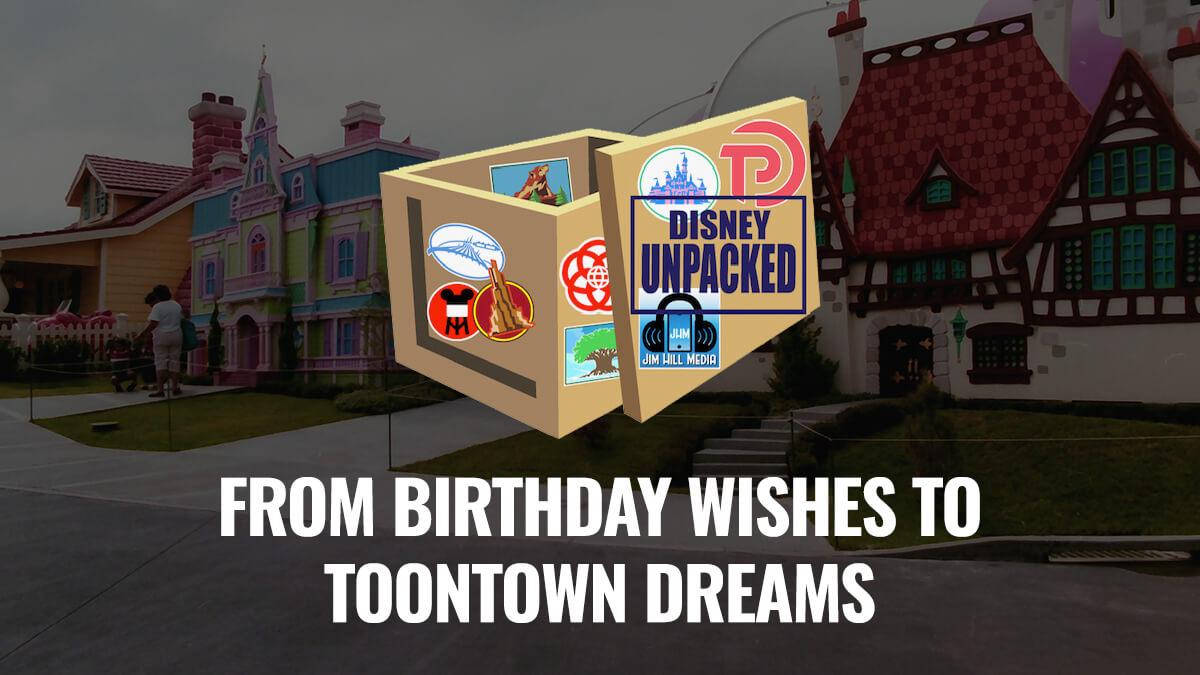
In the latest release of Episode 4 of Disney Unpacked, Len and I return, joined as always by Disney Imagineering legend, Jim Shull. This two-part episode covers all things Mickey’s Birthday Land and how it ultimately led to the inspiration behind Disneyland’s fan-favorite land, “Toontown”. But let’s not get ahead of ourselves here. It all starts in the early days at Disneyland.
Early Challenges in Meeting Mickey
Picture this: it’s the late 1970s and early 1980s, and you’re at Disneyland. You want to meet the one and only Mickey Mouse, but there’s no clear way to make it happen. You rely on Character Guides, those daily printed sheets that point you in Mickey’s general direction. But let’s be honest, it was like finding a needle in a haystack. Sometimes, you got lucky; other times, not so much.
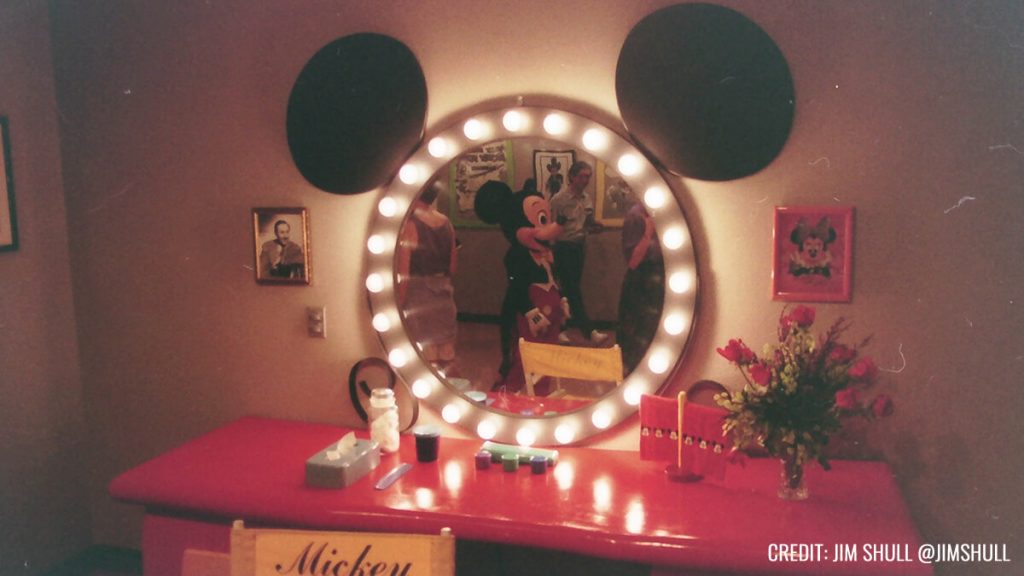
Mickey’s Birthdayland: A Birthday Wish that Came True
Fast forward to the late 1980s. Disney World faced a big challenge. The Disney-MGM Studios Theme Park was under construction, with the company’s marketing machine in full swing, hyping up the opening of Walt Disney World’s third theme park, MGM Studios, in the Spring of 1989. This extensive marketing meant that many people were opting to postpone their family’s next trip to Walt Disney World until the following year. Walt Disney World needed something compelling to motivate guests to visit Florida in 1988, the year before Disney MGM Studios opened.
Enter stage left, Mickey’s Birthdayland. For the first time ever, an entire land was dedicated to a single character – and not just any character, but the mouse who started it all. Meeting Mickey was no longer a game of chance; it was practically guaranteed.
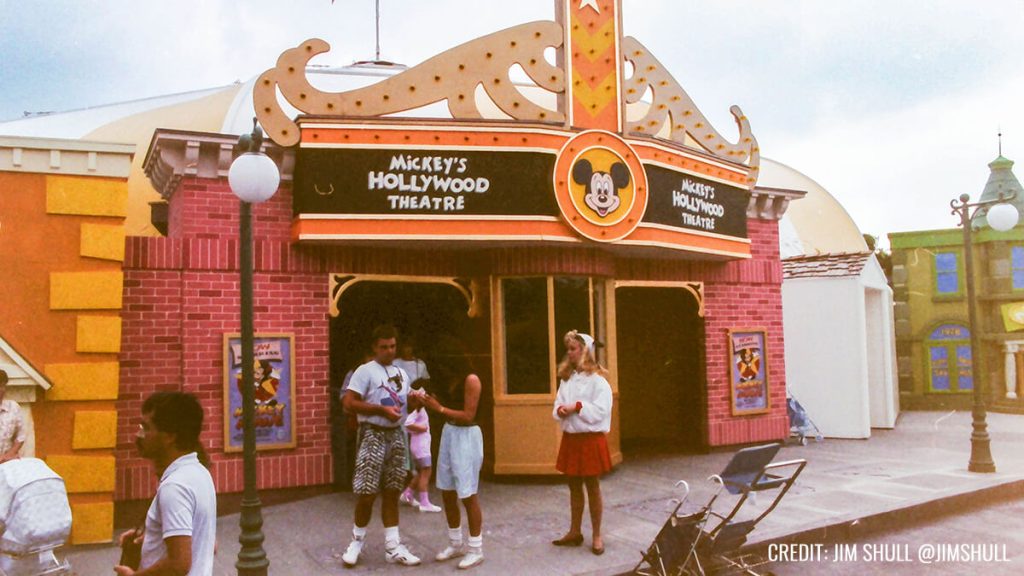
The Birth of Birthdayland: Creative Brilliance Meets Practicality
In this episode, we dissect the birth of Mickey’s Birthdayland, an initiative that went beyond celebrating a birthday. It was a calculated move, driven by guest feedback and a need to address issues dating back to 1971. Imagineers faced the monumental task of designing an experience that honored Mickey while efficiently managing the crowds. This required the perfect blend of creative flair and logistical prowess – a hallmark of Disney’s approach to theme park design.
Evolution: From Birthdayland to Toontown
The success of Mickey’s Birthdayland was a real game-changer, setting the stage for the birth of Toontown – an entire land that elevated character-centric areas to monumental new heights. Toontown wasn’t merely a spot to meet characters; it was an immersive experience that brought Disney animation to life. In the episode, we explore its innovative designs, playful architecture, and how every nook and cranny tells a story.
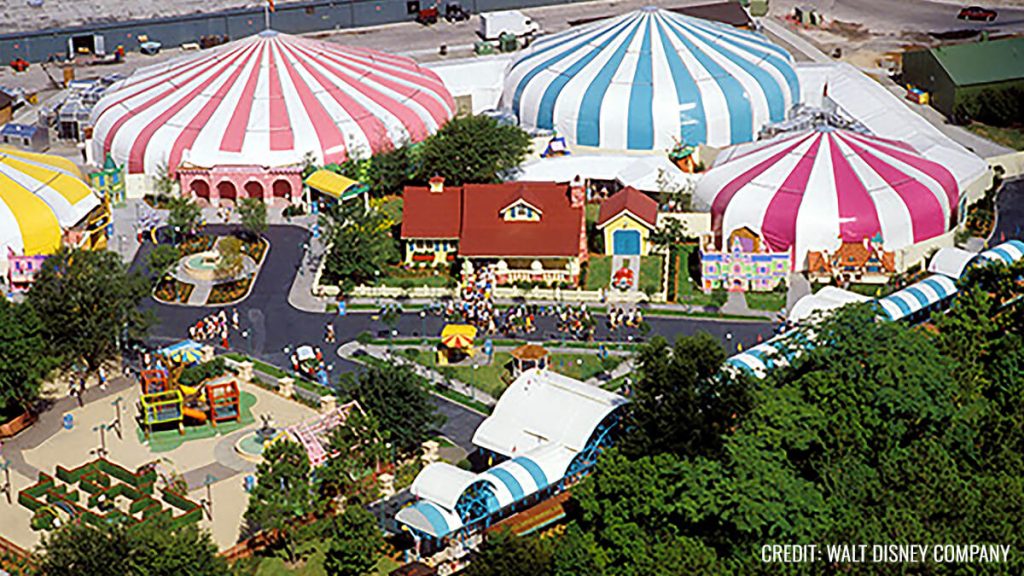
Impact on Disney Parks and Guests
Mickey’s Birthdayland and Toontown didn’t just reshape the physical landscape of Disney parks; they transformed the very essence of the guest experience. These lands introduced groundbreaking ways for visitors to connect with their beloved characters, making their Disney vacations even more unforgettable.
Beyond Attractions: A Cultural Influence
But the influence of these lands goes beyond mere attractions. Our episode delves into how Mickey’s Birthdayland and Toontown left an indelible mark on Disney’s culture, reflecting the company’s relentless dedication to innovation and guest satisfaction. It’s a journey into how a single idea can grow into a cherished cornerstone of the Disney Park experience.
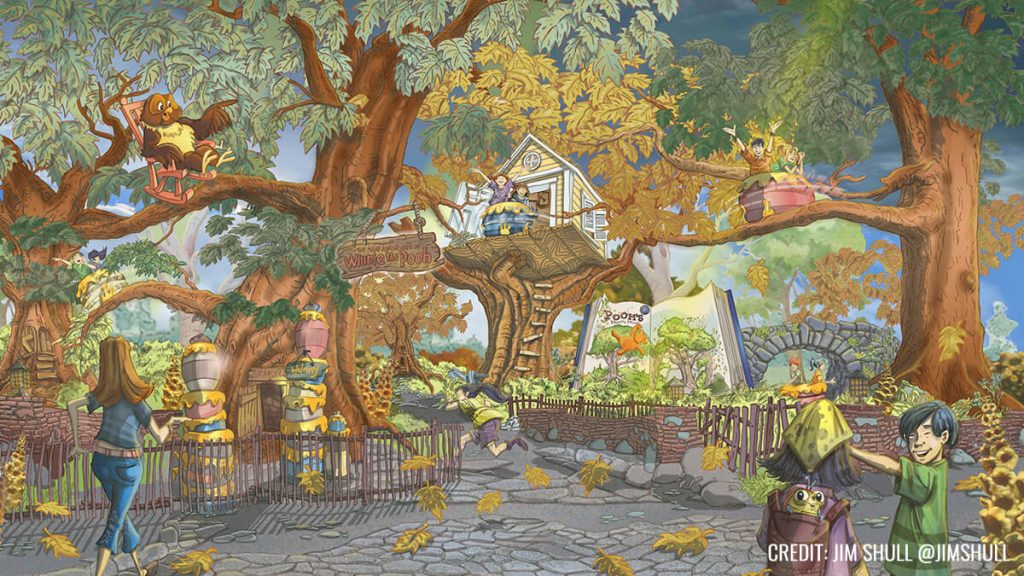
Unwrapping the Full Story of Mickey’s Birthdayland
Our two-part episode of Disney Unpacked is available for your viewing pleasure on our Patreon page. And for those seeking a quicker Disney fix, we’ve got a condensed version waiting for you on our YouTube channel. Thank you for being a part of our Disney Unpacked community. Stay tuned for more episodes as we continue to “Unpack” the fascinating world of Disney, one story at a time.
-
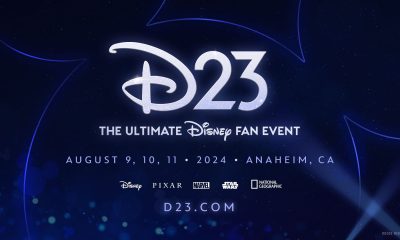
 News & Press Releases11 months ago
News & Press Releases11 months agoDisney Will Bring D23: The Ultimate Disney Fan Event to Anaheim, California in August 2024
-
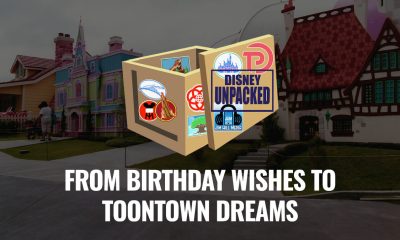
 History6 months ago
History6 months agoFrom Birthday Wishes to Toontown Dreams: How Toontown Came to Be
-
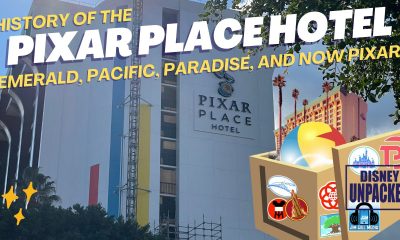
 History6 months ago
History6 months agoUnpacking the History of the Pixar Place Hotel
-
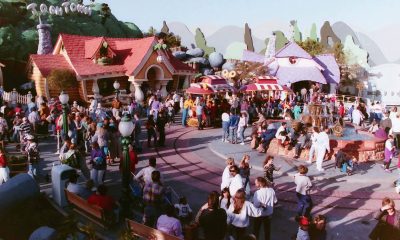
 History6 months ago
History6 months agoThe Evolution and History of Mickey’s ToonTown
-

 News & Press Releases5 months ago
News & Press Releases5 months agoNew Updates and Exclusive Content from Jim Hill Media: Disney, Universal, and More
-
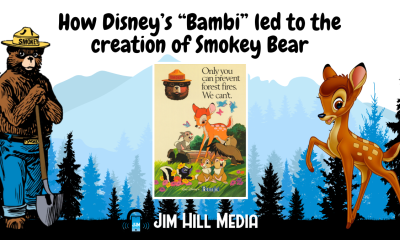
 Film & Movies3 months ago
Film & Movies3 months agoHow Disney’s “Bambi” led to the creation of Smokey Bear
-

 Merchandise4 months ago
Merchandise4 months agoIntroducing “I Want That Too” – The Ultimate Disney Merchandise Podcast






